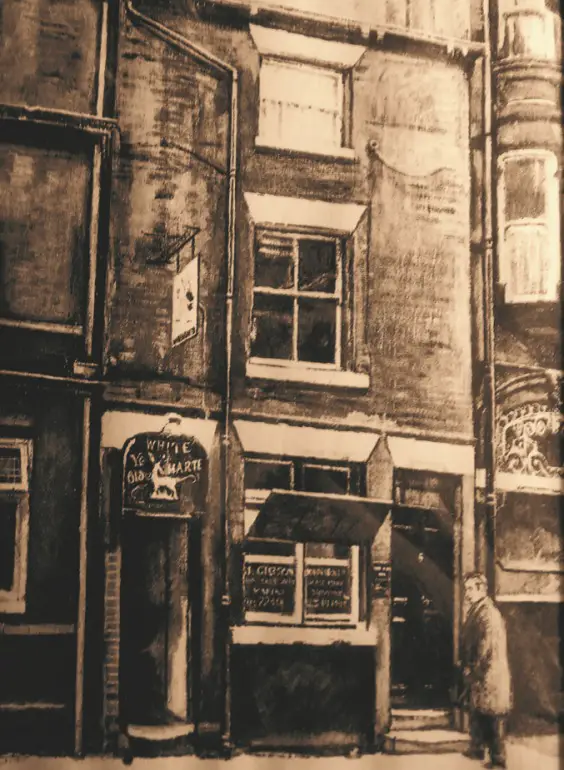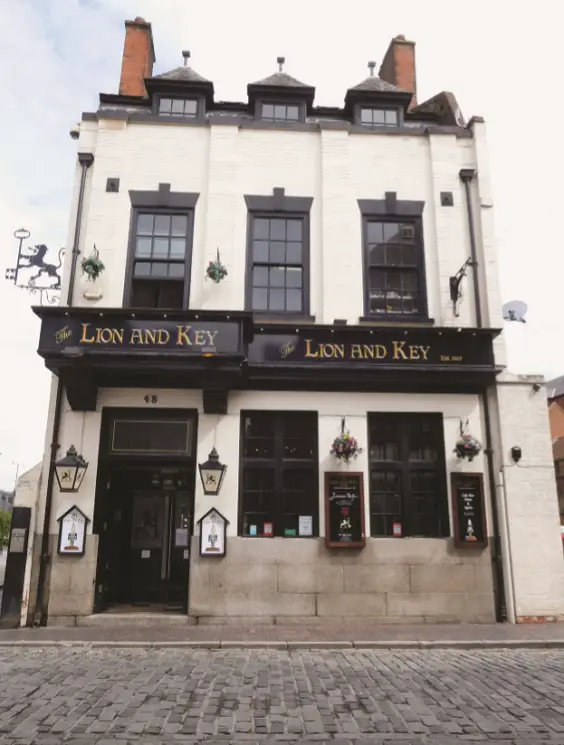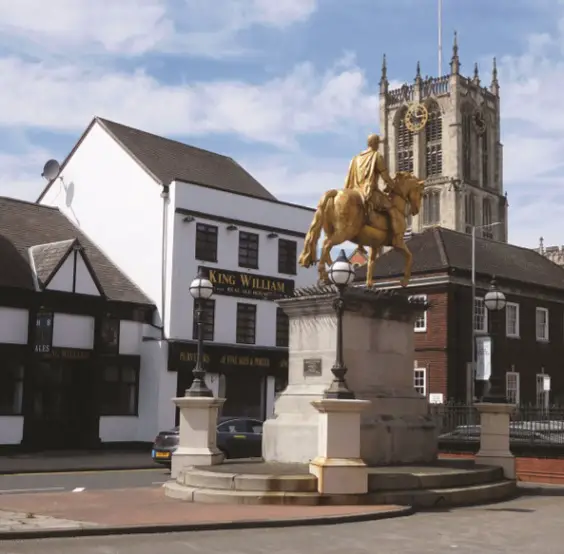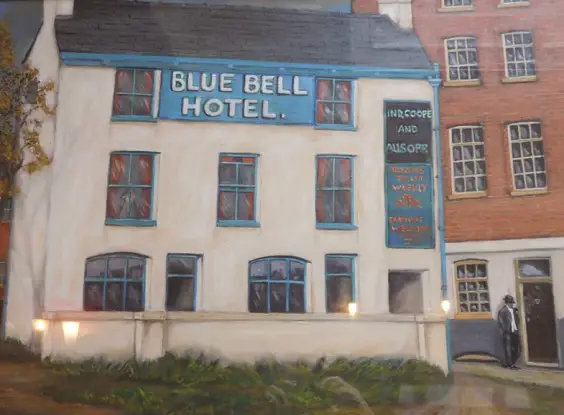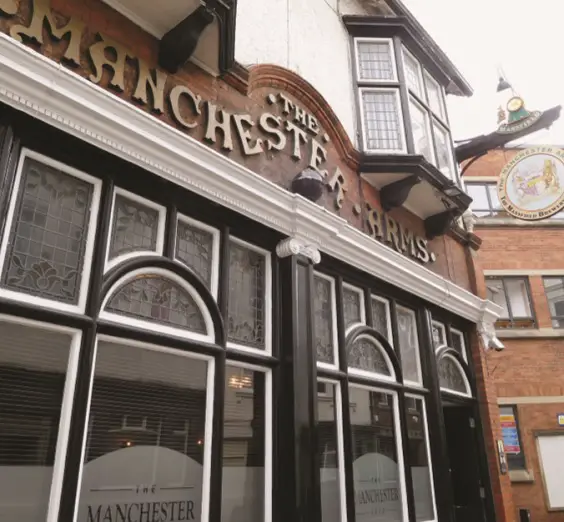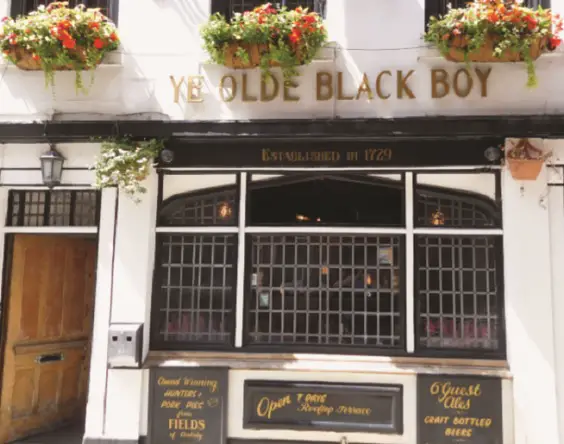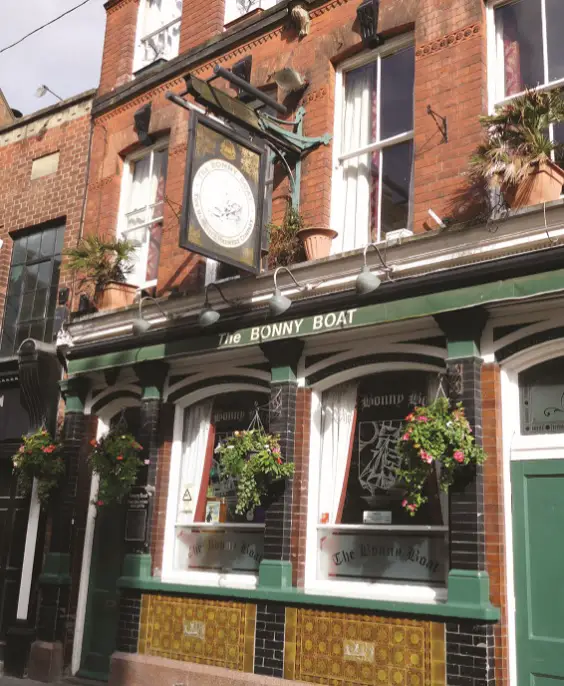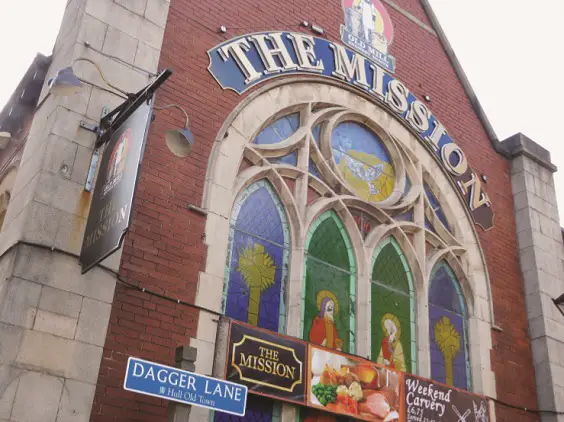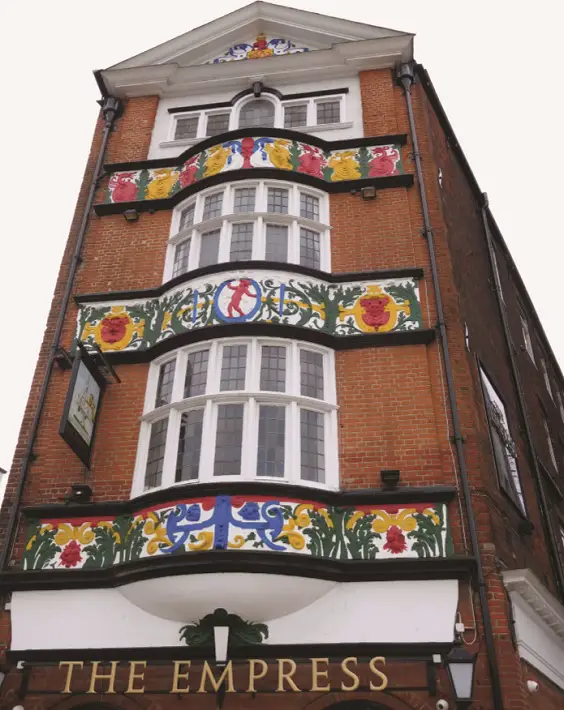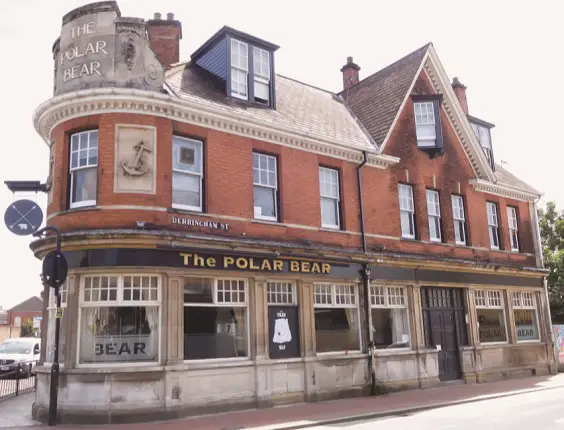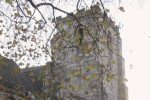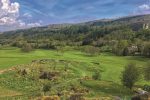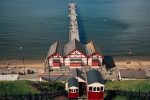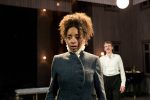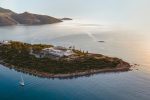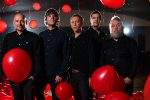Historic Hull Pubs
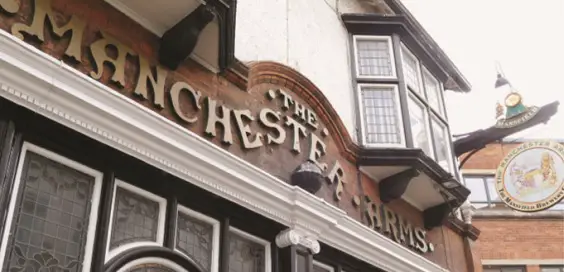
By Paul Chrystal
Hull is one of England’s most historical and diverse cities, and boasts a wealth of taverns, inns, alehouses and public houses. Most of the older drinking establishments that have survived have stories to tell – frequently quirky or surprising, always interesting and often with nautical links, given the city’s associations over the centuries with the fishing and shipbuilding industries.
In his book Hull Pubs, author and historian Paul Chrystal takes the reader on a fascinating tour around some of the watering holes in the city and its surrounding villages, relating historical facts and dubious tales on subjects as diverse as the English Civil War, Philip Larkin, maritime matters and the slave trade.
Here, we select 10 from the many in the book as we take a tour around some of Hull’s historic pubs…
Ye Olde White Hart
Probably the most famous of Hull’s many famous pubs. The building was originally a private residence built in the Artisan Mannerist style – modest but with free use of Classical models, just like nearby Wilberforce House. In 1881 Smith & Brodrick made significant alterations begetting a Romantic recreation of an idealised seventeenth-century inn, complete with huge fireplaces. Legend has it that in 1642 the English Civil War was hatched at Ye Olde White Harte, in an upstairs room. This room, aptly named the Plotting Room, has changed very little since the seventeenth century.
The story goes that the pub was the residence of Sir John Hotham, one of Hull’s military governors and keeper of one of the nation’s largest arsenals, who in 1642 precipitated the siege of Hull, and in turn the Civil War, by refusing to admit Charles I to the city. But, sadly, this is nothing more than an urban myth: documentary evidence and architectural research in the late twentieth century tells us as much, proving that the building was not built until after the Civil War. Research, however, has confirmed that Ye Old White Harte was the venue of the meeting to plot the overthrow of Lord Langdale, the Catholic governor appointed by James II, to seize all the town’s Protestant officers, following the landing of William of Orange in England in November 1688. This major event was celebrated for many years as ‘Town Taking Day’. The building became a pub in the 1730s and is now listed; the wood panelling and beautifully tiled inglenook fireplaces add to the unique sense of occasion for drinkers and diners.
The Lion and Key
The site originally belonged to The Britannia Coffee House. The Lion and Key served its first ale in 1817, before it became offices in the mid-twentieth century. The 1980s saw it reopen as an Irish bar, Durty Nellys, before the current owners reinstated its original name in 2007. It is sister pub to Walters and Wm Hawkes nearby. The name originated from Wellington’s capture of Ciudad Rodrigo in 1812 during the Peninsular War. This town was considered to be the ‘key’ to Spain and the pub sign outside depicts a British lion with a large key in its paws. The inside is a sight to behold and the Pubs Galore website describes it well: The pub has been liberally decorated with all manner of items… The ceiling is covered with pump clips and suspended from it are a couple of large cartwheels acting as light fittings plus a big clock. High shelves are packed with various bits including lots of breweriana, old tankards, adverts, horseshoes and horse brasses, scales, bottles, first aid kits and the like. Meanwhile, the walls are almost entirely obscured by some great old adverts, posters, playbills and so forth.
The King William
This pub stands opposite the statue of William III in Market Place. It is reputedly where King Billy, having dismounted from his horse, went for a drink every night, as Holy Trinity tolled midnight. This is certainly a myth since the pub’s drinks’ license never extended so late. The ‘King Billy’, as it is known, started life as John Hellier’s Coffee House and News Subscription Rooms. The building had formerly been a linen shop and then an ironmongers, before it was first licensed in 1834. In 1840 Henry Dean changed the name to Dean’s Coffee House, running hot and cold vapour baths as a sideline. The year 1860 saw it take its regal name. The mortgage was transferred in 1887 to Gleadow, Dibb & Co., later the Hull Brewery Company Ltd, and later still Mansfield Brewery. The pub was refurbished in 2016 after some years languishing in dilapidation.
The Blue Bell
This pub can be found in an inconspicuous alley off Lowgate, flagged by a large blue bell that is the inn’s sign. It is quintessentially Victorian but has been around since the 1790s, when it was an oasis for market workers. The Blue Bell was originally a coaching inn, seeing coaches arrive from and leaving for Patrington, for example. During the Blitz landlord Martin Cross valiantly saved his burning pub from incineration. His parrot, Polly, was partial to many a gin and tonic over her twenty-five years in residence. The pub was refurbished by Cameron’s Brewery of West Hartlepool in 1965 and then by its present owners, Tadcaster brewers Samuel Smith’s, in 1986.
The Manchester Arms
Established in 1791, earlier days have seen this public house glory in such evocative names as The Blade Bone, The Slaw Bone, The Earl Grey and The Black Bull Inn before becoming the The Manchester Arms in 1876. It is named after HMS Manchester, which was the first ship to enter Hull’s first ever dock. Next door stands Hull’s oldest building. There are black and white stone-carved cherubs on its façade and etched windows and carvings of two drinkers, mouths agape, drinking from barrels, and a lion’s head. Inside, the ceiling is red, blue and green. The back room displays a large map of Hull annotated with accounts of its history. A ship’s wheel hangs on another wall.
Ye Olde Black Boy
This is the oldest pub in Hull, dating back to around 1720. The premises were originally used by a tobacco merchant who traded from the River Hull; the intriguing name reputedly comes from the ‘black boy’ – the pipe-smoking American Indian which was adopted as a symbol by the tobacco trade. The pub is alleged to have been frequented by slavery abolitionist and champion of the partially sighted William Wilberforce. The building was later occupied by a wine merchant. The site was known as Gastryk House.
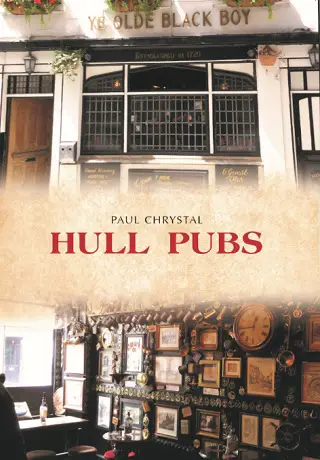 In 1336, Richard Taverner took over a tenement, a gift of William de Gastryk to Richard’s father, Hugh. The first reference to licensed premises here is in 1729, when victualler William Smith and his wife Mary bought a garden at the rear of their house (No. 149 High Street) from a baker and erected a brewhouse on the Hayton, baker, mentions Ye Olde Black Boy. Another deed dated 3 March 1879 describes the property as ‘150 High Street and also two cottages adjoining in rear of 149 High Street, formerly called the Black Boy’. The first trade directory reference to Ye Olde Black Boy as a licensed premises is in 1792, when James Hayes was the victualler. A year later an auction was held at Ye Olde Black Boy to sell a brewer’s dray. A brewer bought the pub in June 1808: ‘Lupton, Holden & Dewitt offer for sale the Black Boy, High Street, together with the tenement, pipemakers shop and premises adjoining.’
In 1336, Richard Taverner took over a tenement, a gift of William de Gastryk to Richard’s father, Hugh. The first reference to licensed premises here is in 1729, when victualler William Smith and his wife Mary bought a garden at the rear of their house (No. 149 High Street) from a baker and erected a brewhouse on the Hayton, baker, mentions Ye Olde Black Boy. Another deed dated 3 March 1879 describes the property as ‘150 High Street and also two cottages adjoining in rear of 149 High Street, formerly called the Black Boy’. The first trade directory reference to Ye Olde Black Boy as a licensed premises is in 1792, when James Hayes was the victualler. A year later an auction was held at Ye Olde Black Boy to sell a brewer’s dray. A brewer bought the pub in June 1808: ‘Lupton, Holden & Dewitt offer for sale the Black Boy, High Street, together with the tenement, pipemakers shop and premises adjoining.’
“Liquid refreshments”
Lupton & Holden were brewers at No. 56 High Street and James Dewitt was a ship owner and wine merchant in North End from 1810 to 1811. By 1842 the Black Boy was advertised as a free house, having passed from the brewers to a wine and spirit merchant. A promotional flyer printed for Warwick & Co. (Hull) Ltd, owners between 1923 and 1925, describes the premises:
This house in bygone days was a regular meeting house for merchants and others. Messrs. Warwick & Ward (Hull) Ltd., wish to intimate to those concerned, that facilities for meeting there still exist. The bar downstairs retains its old characteristics, and one can sit there at ease in cheerful comfort surrounded by highly polished hogsheads and glistening bottles. Two rooms upstairs are available for small business meetings. The rooms are fully equipped for these purposes, and whilst they are part of the old inn, they have a separate entrance, and it is not necessary to pass through the bar to gain admittance to them. Situated in the heart of Hull’s business community, they form an ideal place of meeting. Anyone desirous of arranging small meetings is invited to make application to the Manager for the use of these rooms. Liquid refreshments can be served in them during licensed hours.
In 1968, when Kenneth and Patricia Atkinson were licensees, a fire in a derelict smithy spread to the back of Ye Olde Black Boy. The pub’s dog raised the alarm and so prevented serious damage. In 2015 the façade of Ye Olde Black Boy was painted bright pink to mark the Freedom Festival. The aim was to send out a message that colour matters not.
The Bonny Boat
This pub was trading from 1791 from this site when Trinity House Lane was called old Beverley Street. Before then it was The Bank Hotel. It is awash with nautical nostalgia: three barometers; a sign saying ‘Port hole to be closed when ship is at sea’, and a big bell from the tug Brahman, famous for rescuing a Royal Navy ship struck by a torpedo in the Second World War. Outside there is some glorious green-glazed tiling. The name remembers an old Inuit kayak still owned by nearby Trinity House. Captain Andrew Barker from Hull was in command of a ship called the Heartsease on an early seventeenth-century expedition to Greenland in search of minerals when they found an kayak with an exhausted Inuit. The poor man sadly died, but he is remembered by his kayak and a likeness of himself, and the nearby pub. The kayak was brought from Spitsbergen to Hull in 1596.
The Mission
This atmospheric pub is noted for its spire, fine stained-glass window in the west wall and wooden pews. Formerly the chapel for a Seaman’s Mission founded in 1926 it was, until recently, used as an overflow service called ‘full mission’ from nearby Holy Trinity Church. The Seamen’s Mission was built in 1886 and was a kind of club and hostel for sailors situated just opposite the offices of the Local Marine Board, where sailors would have to sign on and get paid off when going to sea. It was extended in 1926–27 to form the Mariners’ Church of the Good Shepherd Owners. The Old Mill Brewery in Snaith was established in 1983 and opened The Mission in 1995.
The Empress
The Empress is a fine-looking former Queen’s dockside pub looking out onto Queen’s Gardens; it was originally called The Dockside Tavern in 1790, or just plain Dock, and then The Old Dock Tavern, refreshing those working on the nearby Queens Dock. Toilets were in the building next door. The building was originally a dockside warehouse. We have a German landlord to thank for the name change in 1876: Herr Westeroff, obviously keen to cement national ties with the monarch, successfully applied to change the name to The Empress (of India) with the proviso that the pub remained closed on Sundays.
The Polar Bear
The Polar Bear, No. 229 Spring Bank, Hull A pub since the mid-1800s, The Polar Bear (like The Botanic next door) gets its name from the old Hull Zoological Gardens, a long-gone Victorian attraction on the opposite corner of Spring Bank and Princes Avenue which opened in October 1840. The polar bear pit was a popular feature. The Polar Bear is one of only eleven pubs nationwide that still serves from a ceramic bar. According to the Yorkshire Post, it is ‘a wonderfully impressive, huge, curved affair that is now Grade II listed along with the pub’s equally attractive stained glass dome ceiling.
Coincidentally, one of the other ceramic bars is also in Hull, in the White Hart on Alfred Gelder Street’ (29 September 2013). The second licensee of The Polar Bear, from around 1850 until at least 1867, was Joseph Seaman. Mr Seaman was a man of many talents: as well as being victualler of The Polar Bear Tavern, he was superintendent of the Zoological Gardens, chief scenic artist and ‘pyrotechnist’ at the gardens, model maker and taxidermist. Many of the animals in the Zoological Gardens were brought to Hull by sea and as the in-transit mortality rate of the various species would have been high, Mr Seaman had a ready supply of specimens for his taxidermy.
‘Hull Pubs’ by Paul Chrystal is published by Amberley Publishing, £14.99
